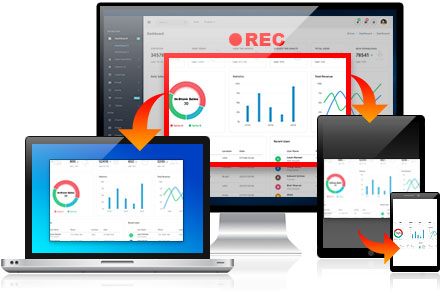This week’s hands-on activity is the creation of a screencast, a very common form of video lesson, especially during the online environment. The screencast can very effectively mimic a face-to-face learning experience with both video and audio available. This is a great multimedia object for any teaching or demonstration purposes, especially those involving hands-on activities or practical operations. The screencast I presented in this post is a demonstration of how to navigate through Virtual Clinics and successfully book a telehealth appointment. This form of media is a very straightforward and understandable way of showing the procedures of booking an appointment online and can allow users to follow along easily.
Screencasting has played an important role in my previous learning experience. One significant example is Khan Academy, where numerous simple and complicated concepts are taught by professional teachers. It has really helped me with clarifying and revising certain material that I did not understand in school and can be used as a great source of revision during exam periods.

Digital storytelling can also show its value in education, especially with pre-school or primary education. It has the potential to incorporate more vivid and lively graphics than the traditional-style, and is more likely to attract pupils to learn or engage with the content. The below video bring an introduction to digital storytelling and steps to create effective digital stories.
After learning all the different multimedia principles up until now, I have realized that some principles are more commonly or intuitively followed than others. This includes the general principle of using pictures and words as well as forming a design where information is clearly displayed (highlighting key information or integrating images and texts). Some principles require more attention to be fully followed, such as the Embodiment Principle and the Coherence principle. Knowing these principles can make multimedia objects more appealing and serve their purposes of transferring knowledge.
References
U of G Library. (2019, November 30). What is Digital Storytelling? [Video]. YouTube. https://www.youtube.com/watch?v=JIix-yVzheM

2021-06-05 at 9:21 pm
Hello Leo, thank you for sharing your thoughts on screencasting and experience with Khan Academy. The screencast you created is very clear and concise, with easy-to-follow telehealth appointment booking steps! Viewers can follow along with the demonstration without any distractions. I have used Khan Academy as well since my high school math teacher has recommended it. Khan Academy is a great example of screencasting use in the education field. The Youtube video that introduces digital storytelling is interesting, and I gain a better understanding of digital storytelling after watching the video. Thanks again for creating this blog post!
2021-06-06 at 3:32 pm
Great use of screencast! A busy blog post and well designed. Intuitively I have followed some of our learning but admittedly others I have to think about and add later at times.
2021-06-25 at 9:24 pm
Hi Leo,
I agreen with the idea of the screencat , because I have the same experiences as you, when I learned calculus, I used the Khan Academy to solve my problem, it surprise me that the screencat provide a new way to learn difficult knowldge,and it reduce our pressure from learning process.Thans for your sharing.